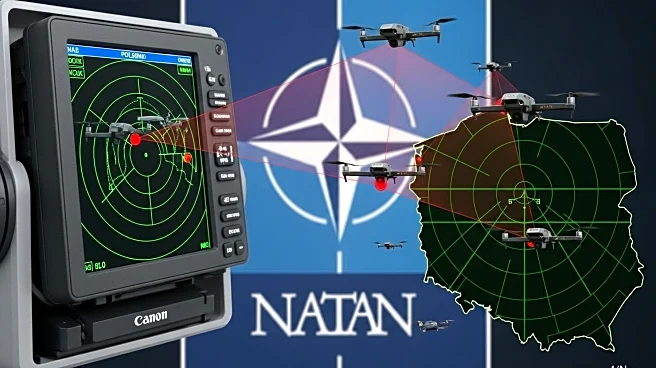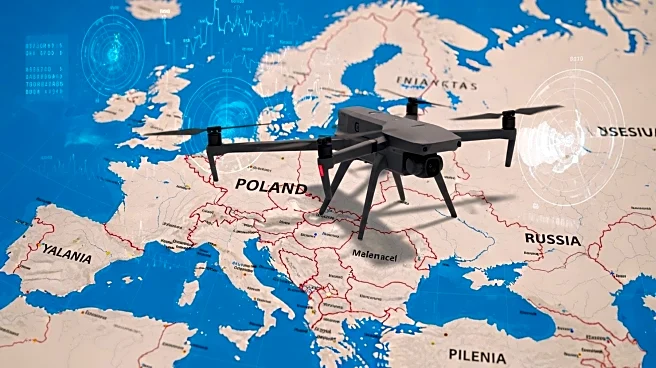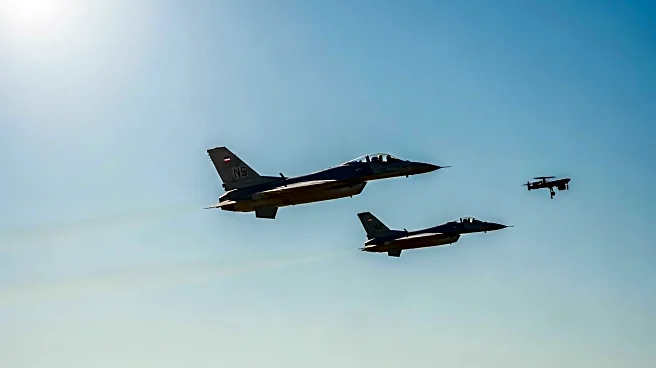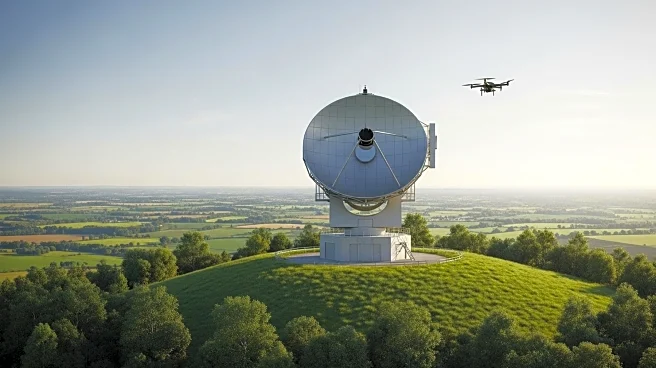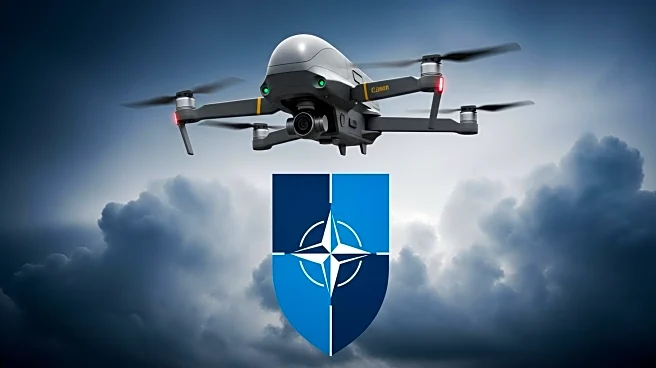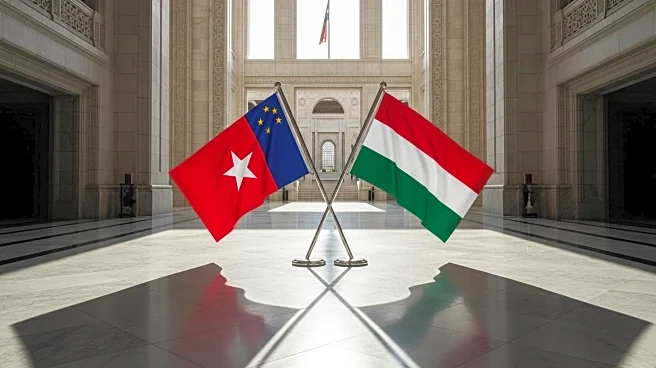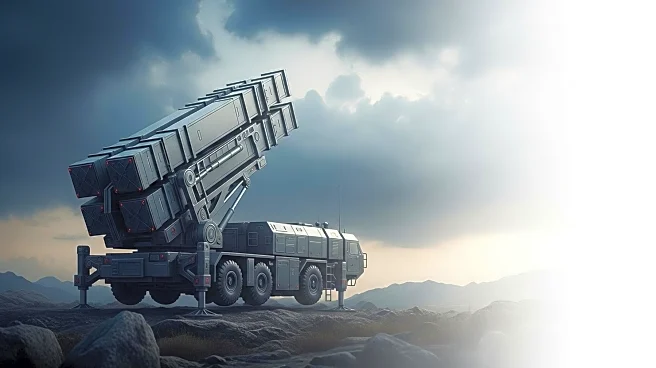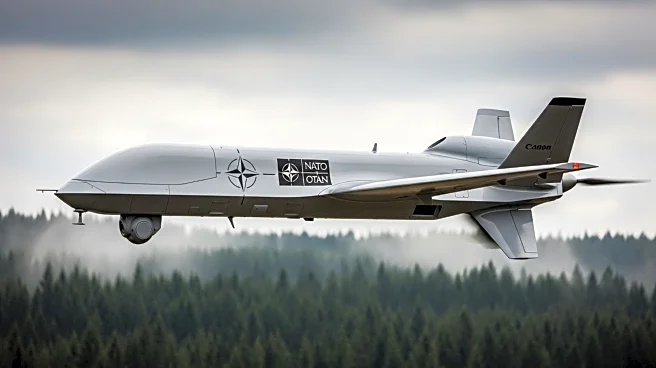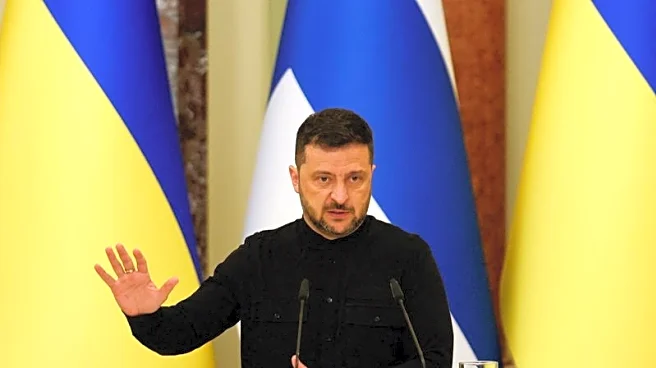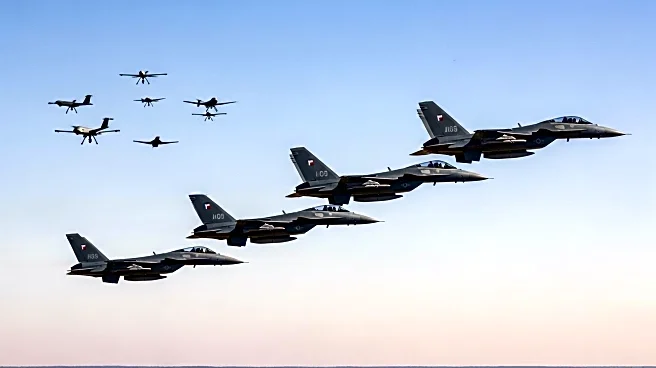What's Happening?
NATO faced a significant security incident as Russian drones entered Polish airspace, prompting a coordinated military response. The drones, identified as Russian-fabricated long-range combat models, were detected heading towards a NATO logistics hub in Rzeszów, Poland. This led to a series of alerts, escalating from yellow to red, as NATO forces prepared to intercept. Poland deployed F-16 fighter jets and helicopters, while NATO interceptors and German Patriot missile-defense systems were readied. The situation culminated with a Dutch F-35 fighter jet shooting down the first drone at 1:13 a.m. By 4:44 a.m., the threat was neutralized, with several drones crashing without causing injuries. Poland invoked Article 4 of the NATO treaty, which calls for consultations among member countries when territorial integrity is threatened.
Why It's Important?
This incident underscores the heightened tensions between NATO and Russia, highlighting the potential for escalation in Eastern Europe. The deliberate entry of Russian drones into NATO airspace represents a provocative act that could strain diplomatic relations further. For NATO, this event tests the alliance's readiness and response capabilities, emphasizing the importance of collective defense mechanisms. The invocation of Article 4 signifies a serious concern for NATO's territorial integrity, potentially leading to increased military presence and strategic adjustments in the region. This development could impact U.S. foreign policy and defense strategies, as the U.S. is a key NATO member committed to European security.
What's Next?
Following the incident, NATO members are likely to engage in high-level consultations to assess the situation and determine appropriate responses. This could involve increased military deployments in Eastern Europe and enhanced surveillance measures. The incident may also prompt discussions on strengthening NATO's air defense systems and revisiting defense strategies against potential Russian aggression. Political leaders within NATO countries, including the U.S., may face pressure to take a firm stance against Russia, potentially leading to diplomatic or economic sanctions. The situation could also influence future NATO summits and defense policy decisions.
Beyond the Headlines
The incident raises questions about the evolving nature of warfare, where unmanned aerial vehicles play a significant role. It highlights the need for NATO to adapt to new technological threats and develop countermeasures against drone incursions. Additionally, the event may have legal implications regarding airspace violations and the rules of engagement for unmanned systems. Culturally, it could affect public perception of security in Europe, leading to increased support for defense spending and military alliances.
